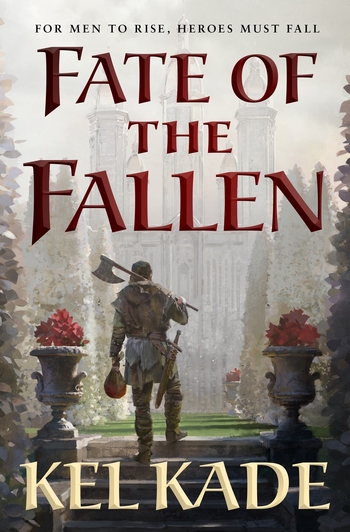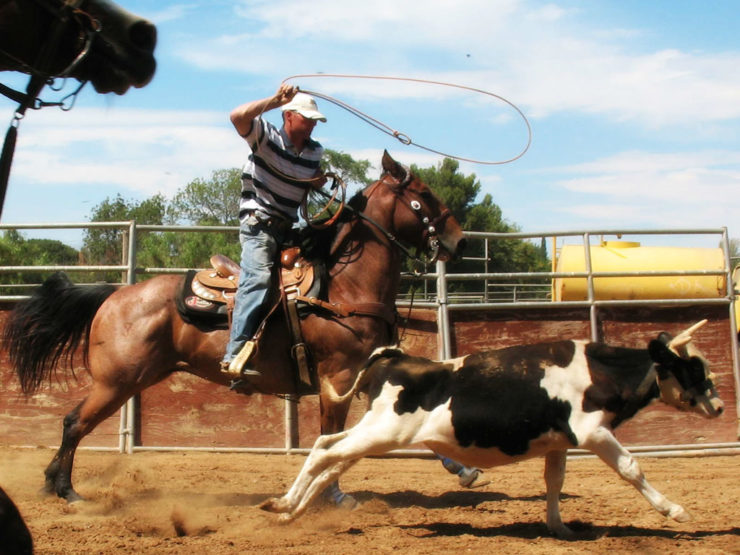Many breeds of horses are specialists. Individuals may excel in a variety of disciplines, and if the structure of the animal is sound, it can do whatever it’s asked to do. But the breed itself will be designed for a particular skill or set of skills.
The Clydesdale, for example, is a spectacular carriage horse. I’ve seen Clydes and Clyde crosses make wonderful riding horses, field hunters, even dressage horses. But the flashing, ground-shaking trot, the flowing feathers, the sheer weight and mass of a team powering down the road pulling a beer wagon—it’s iconic.
The Thoroughbred is a fabulous jumper and competition dressage horse, and for decades was the horse for three-day eventing. However, he’s first and foremost a racehorse. He was bred to run, and that’s still where he wins the most fame and fortune.
And then there’s the breed of my heart, the Lipizzan. You can find them cutting cows and competing in horse archery and winning international carriage competitions, but they became famous as the Dancing White Horses of Vienna—baroque dressage horses, dancers and gymnasts of the horse world, and especially renowned for their signature leaps, the Airs Above the Ground. Even the foals will do them, because it’s bred in.
And then there are breeds that take pride in doing it all. The original breeders might have had a particular purpose in mind, but over time the breed has branched out.
The American Quarter Horse Association was founded in 1940, but the breed is much older than that. The original stock goes back to the seventeenth century, with the crossing of Chickasaw horses of Spanish extraction on heavier stock brought over to North America by English colonists. The result was a sturdy, stocky, muscular animal with blazing speed over short distances. Hence, “American Quarter Running Horse.”
Quarter-mile racing went out of fashion as longer races went into vogue, with the Thoroughbred becoming the premier racehorse of the eighteenth century and onward. But the Quarter Horse was more than a sprint racer. He was fast and agile on his feet, and smart and sensible into the bargain.
When the colonial expansion spread west, driving the buffalo into extinction and filling the vast plains with herds of cattle, the Quarter Horse became the premier mount of the American cowboy. He interbred with the native horses as he had with Thoroughbreds back east, but kept his essential nature and his distinctive conformation. By the beginning of the twenty-first century the American Quarter Horse registry was the largest in the world, with close to three million purebreds registered, plus the Appendix registry with its Thoroughbred crosses, plus all the unregistered and backyard and crossbred stock, not to mention the numerous outcrosses in the Appaloosa and the Paint horse registries.
Not only in the United States, either, or in the rest of North America—the national horse of Mexico, the Azteca, is a cross between the Quarter Horse and the Andalusian. Quarter Horses are hugely popular in Europe, especially in Germany. For all the magic and mystique of the German Warmblood and the Austrian Lipizzaner, the Germans and Austrians just love the American stock horse. It’s just as magical for them as their horses are for the U.S.
I’ve heard it said that as the Warmblood is to Europe, so is the Quarter Horse to the United States. It’s a true all-purpose horse, perennially and deservedly popular for its calm temperament and its all-around athletic ability. Trainers will tell you that the best mount for the beginning rider is a nice middle-aged Quarter Horse gelding. He’s sane and tolerant and he’ll put up with the range of novice mistakes.
It’s a huge breed with a wide range of types and talents. From the short, compact, cat-quick cutting horse to the rangy, almost Thoroughbred-y racing Quarter Horse to the bodybuilder-massive halter horse, there’s something for everybody.
There have been some restrictions. For a long time a Quarter Horse wasn’t allowed a lot of white above the knees or off the head. A horse with that coloration has been welcomed with open arms into the Paint Horse Registry. A Quarter Horse, the feeling went, was a solid-colored horse. Any “crop-out” of white disqualified the horse.
But, color rules aside, there are multiple different types within the breed, and a fair number of controversies about some of them. One of the more significant arose within the halter-horse world.
Halter horses are horses that are shown in halter, unridden, in classes intended to showcase conformation. Horses of all ages can compete—babies as well as riding-age adults. In its original incarnation, halter showing was a way of showing off exceptional individuals, with the expectation that they would also excel in performance classes. A halter horse might be pretty, but he could also deliver the ridden goods—be a pleasure to ride all day, patrol the range, herd cattle.
Humans have a tendency to get fixated on tiny details to the exclusion of the whole picture. In Quarter Horse halter, that meant horses who manifested extreme versions of characteristic traits, notably muscularity. The more muscles a horse had, the more desirable he was considered to be.
There was a particular stallion named Impressive, who truly lived up to his name. He was a Schwarzenegger of horses. And he won his classes. He won them so well and so consistently that everyone wanted to breed to him. Literally thousands of mares had foals by Impressive.
And then word got out. A not insignificant number of these foals had a consistent set of problems. These problems increased in successive generations, as Impressive offspring were bred to one another.
By the time the scandal broke, it was massive. Impressive, it turned out, had a genetic mutation that enhanced his muscular development. A large number of his descendants were succumbing to fits of uncontrollable shaking and sudden paralysis, and some were dying of it.
Buy the Book


Fate of the Fallen
This syndrome, Hyperkalemic Periodic Paralysis or HYPP, is a defect in the sodium channels of the muscles. In its mildest form it causes ongoing contractions of the muscles—i.e., extreme muscle development. In its more severe form, it is fatal. It traces directly to Impressive, and it affects a huge swath of very lucrative Quarter Horse breeders and show trainers. Bottom line: Overdeveloped muscles win halter classes, and HYPP carriers are the muscliest of them all.
The only way to get rid of the mutation is to remove all carriers from the gene pool. Unfortunately that hasn’t been financially or politically feasible. The AQHA’s compromise has been to require testing of all Impressive descendants, and to require that the test results be posted on the registration certificate. Horses with one copy of the gene can be registered and can be bred—though it’s a crapshoot if they’re bred to another carrier; breeders are on the honor system for that. Horses with two copies of the gene, as of 2007, cannot be registered, and therefore cannot be shown.
Halter breeding isn’t the only divisive issue in the breed. A number of breeders also question the incorporation of Thoroughbreds into the gene pool. These breeders want to go back to the old “pure” lines, the original stock on which the AQHA itself was built. The Foundation Quarter Horse Association applies an algorithm to a horse’s pedigree to determine whether he has an adequate proportion of “Foundation” blood. Foundation Quarter Horses are viewed as the real old deal, versus the modern, exaggerated type with its tendency toward overmuscling and less than optimal feet.
However, even with its various genetic and structural problems, the Quarter Horse breed remains hugely and justifiably popular. Literally thousands of us got our start on Quarter Horses. My first horse was a range horse out of Oklahoma, back before the studbook closed. I never did sign her up, but she was a real old-fashioned girl, built like an elegant tank, with a red dun coat and the smarts and savvy of her Mustang relatives. I did everything with that horse—Western, English, jumping, bareback, trails. She was just the thing for a horse-crazy kid.
Horses like her are still at it, living in backyards and packing on trails and working on ranches and starring in rodeos and gymkhanas and horse shows, and race tracks and eventing courses and dressage arenas, too. They really are the all-purpose vehicle of American horsedom.
Photo by Linda Hartman, licensed under the Creative Commons Attribution 2.0 Generic license, via Wikimedia Commons.
Judith Tarr is a lifelong horse person. She supports her habit by writing works of fantasy and science fiction as well as historical novels, many of which have been published as ebooks by Book View Cafe. She’s written a primer for writers who want to write about horses: Writing Horses: The Fine Art of Getting It Right. Her most recent novel, Dragons in the Earth, features a herd of magical horses, and her space opera, Forgotten Suns, features both terrestrial horses and an alien horselike species (and space whales!). She lives near Tucson, Arizona with a herd of Lipizzans, a clowder of cats, and a blue-eyed dog.










